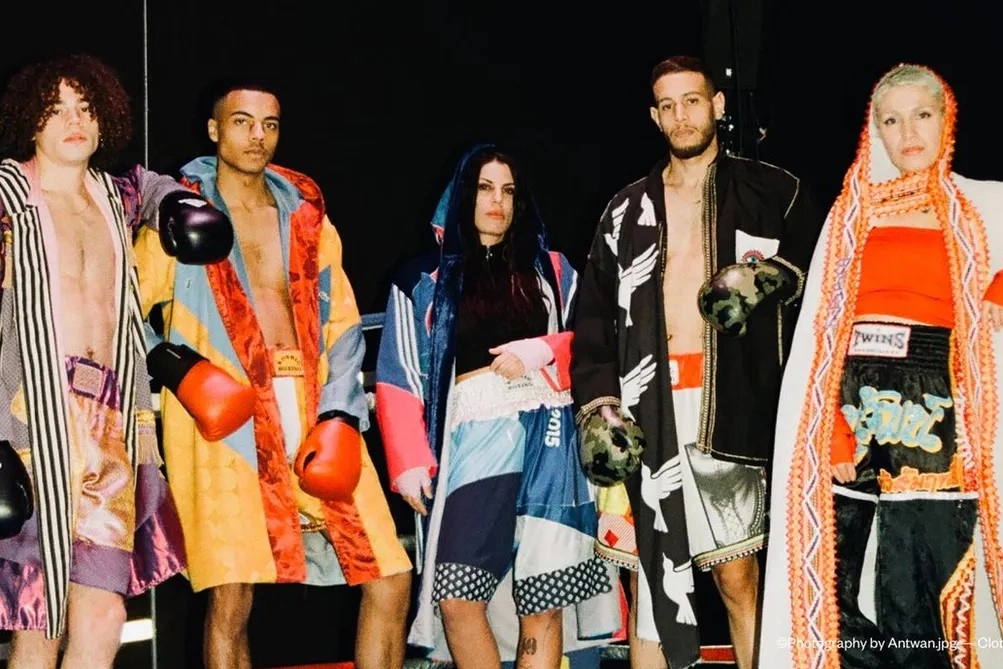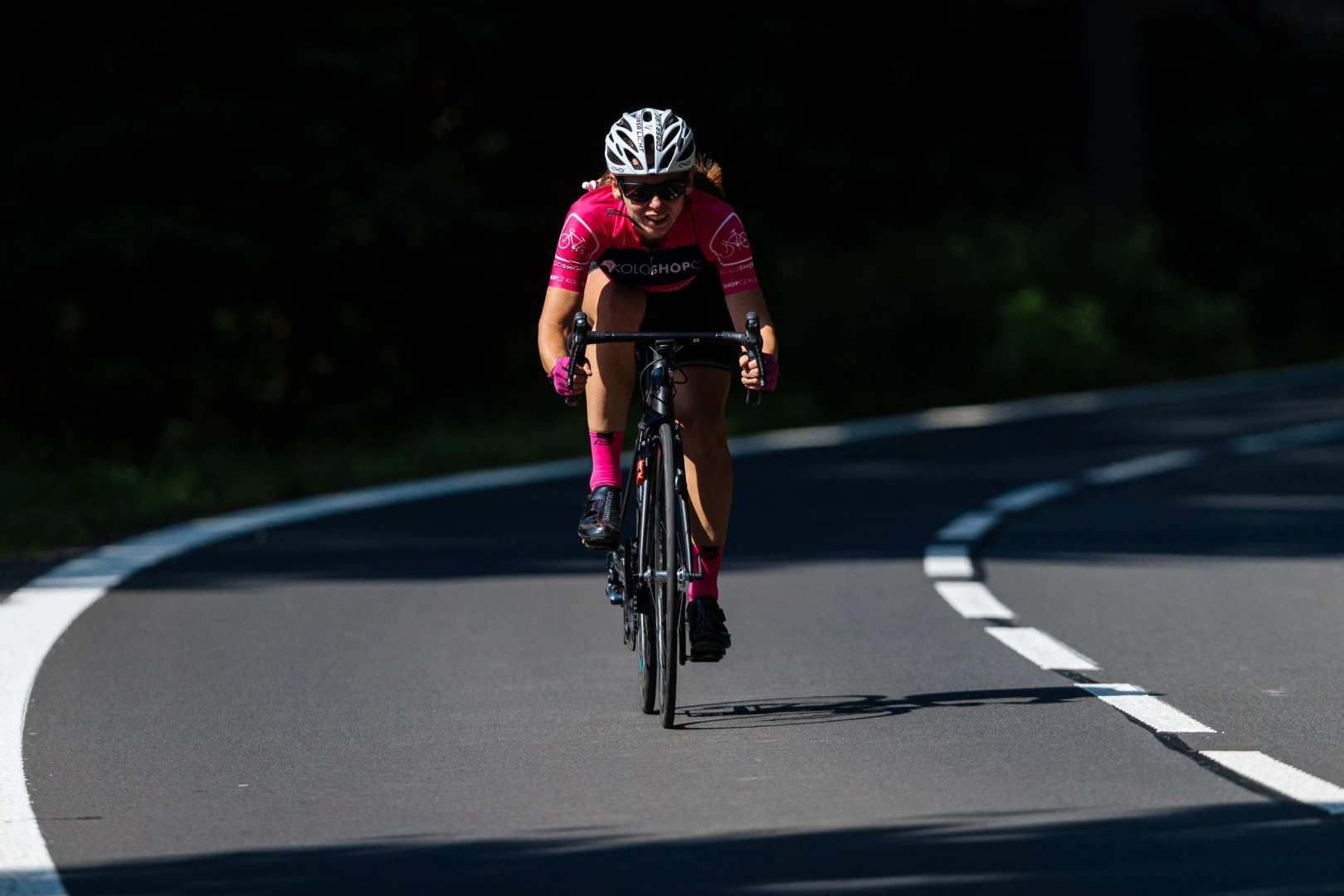For four months following February, the Millennium Iconoclast Museum of Art (MIMA) in Brussels was transformed into a temple dedicated to boxing. The Local Heroes exhibition dedicated to this martial art takes inspiration from ancient Greek gymnasiums and alongside installations, photographs and posters transports you directly into the boxing ring.
Local Heroes
4. 2. – 29. 5. 2023
Mima Museum, Brusel
Curators: Raphaël Cruyt, Alice van den Abeele
------------------------------------------------------------
In fact, the accompanying programme includes matches and training sessions where you can not only see professionals in action - the Flemish Boxing League (VBL), the Brussels Boxing Academy (BBA) and the Idrissi Boxing Pro (IBP) have worked closely with the exhibition - but also try the sport for yourself.

"These days, boxing focuses mainly on athletic performance and the artistic aspect is often forgotten, whereas historically, the two aspects were often intertwined," explains Raphaël Cruyt, one of the curators, adding that the exhibition focuses "on boxing in general but particularly on boxing in Brussels."
The exhibition consists mostly of works by Belgian and Belgian-based artists created specifically for the exhibition space.
The first part of the exhibition is a kind of preparation for a boxing match. The visitor finds themself in a dressing room with lockers and benches, where the athletes change into "sportswear". The clothing in question, the Kosmic Boxing collection, was created especially for the occasion by Brussels-based designer Kenza Vandeput-Taleb and can be seen by visitors both in the exhibition and is even worn by the fighters during the accompanying boxing matches.

In 2019, the artist founded her own fashion label, Kasbah Kosmic, where she creates upcycled clothing combining North African and Western fashion in reference to her Belgian-Algerian background. Clothing has always been a means for Kenza Vandeput-Taleb to shape her identity, and since the label’s beginning, sportswear has played an important role. The artist herself used to box as a teenager and thanks to the exhibition picked the sport back up after many years.

„I trained four times a week for years. It allowed me to blow off steam and made me more self-confident. At that time, I was also the only girl in the club, which fits in with who I am. (…) even had ambitions of becoming a professional boxer, but injuries blocked that and I also struggled with the extreme discipline the sport demands of you. So I stopped, although designing the MIMA expo meant I did go back to the boxing club. I wanted to immerse myself in that world again, to sense it. By the way, it was great to see how many girls are boxing now. Including many Muslim girls boxing with a sports hijab. I designed sportijabs for the MIMA collection, too.“
The collection also includes the traditional Algerian garment kachabia - a men's robe with a pointed hood transformed into a boxing robe. The artist was also inspired by shamanic robes and rituals since entering the ring is a ritual in its own way. The clothes feature words in Arabic, such as the word respect, and a play on famous logos that the artist has reinterpreted in her previous works, in this case, the brands Adidas and Nike.
.jpg)
The colourful outfits are in contrast with the photographs on the walls. The Belgian photographer Christopher de Béthune presents a series of melancholic images from the boxing environment, whose black-and-white processing emphasises the intensity of the training.
„His photos lend something harsh and rough to the space and capture the social function of the Brussels’ boxing scene,“ Raphaël Cruyt comments on the photographer's work.

The next room is where the training begins. There are punching bags along with video installations by cinematographer, set designer and visual artist Yannick Jacquet. On small TV screens, boxers move with concentration, as if fighting imaginary opponents. The soundtrack, which is meant to transport us into the boxer's mind, is provided by artist Antoinie Bertiny. The sound of breathing is replaced by the coach's distant voice, followed by the sound of a bell as we find ourselves in the middle of the ring surrounded by a crowd of spectators.
The second part of the exhibition begins with posters by Belgian illustrator and hard rock lover Dave Decata, one of the artists making work for the American brand Carhartt. Decata's posters depict young boxers in a fighting position, trying to show their individual personalities, but at the same time uniting all of them through a common colour scheme and background.
According to the curators, posters play a big role in boxing because „the competitor uses it to sell their image to the public. From a single glance, the viewer must be able to discern the boxer's readiness for the fight, as well as the personality and style of their boxing.“

Filmmaker and photographer Edouard Valette has created a photographic collection for the exhibition, depicting stylised portraits of young boxers in clothes designed by Kenza Vandeput-Taleb.

The final artist, Brussels-based Spanish illustrator and painter Rocío Álvarez, captures boxing history and popular culture through drawings, murals and collages. She puts a strong emphasis on the history of women's boxing. The first professional women's fights date back to the 1970s, but the professional boxing championship was not held until 1979 and women’s boxing was included in the Olympics as late as 2012.

One of Álvarez's heroines is Laila Ali, daughter of boxing icon Muhammad Ali, or Belgian world champion Delfine Persoon. "So the exhibition ends with a real local hero," curator Raphaël Cruyt does not forget to add.
The exhibition is open until 29 May; the accompanying programme can be found on the museum's website.





